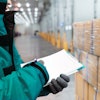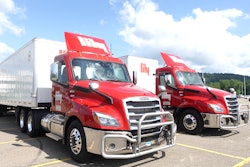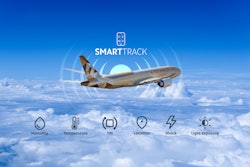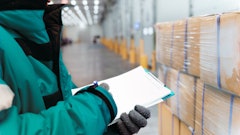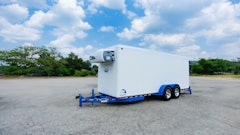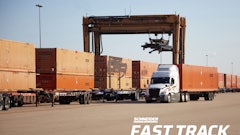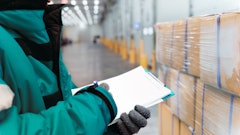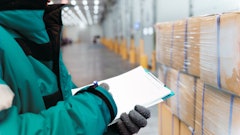
The cold chain is a vital component of global supply chains, ensuring that perishable goods such as food, pharmaceuticals, and other temperature-sensitive products maintain their quality and efficacy from origin to destination.
However, this intricate system faces significant challenges stemming from its complexity, the perishability of its cargo, and the increasing stringency of regulatory requirements. Leveraging advanced technologies, such as real-time location systems (RTLS), environmental sensors, and artificial intelligence (AI), significantly enhances cold chain efficiency.
Here's how integrating these innovations fosters superior visibility, traceability, and compliance while improving operational outcomes.
A complex and high-stakes supply chain
Cold chains operate across a network of interdependent nodes, from the harvesting or manufacturing process (the "first mile") to distribution centers ("middle mile") and, ultimately, to the consumer in the "last mile." This journey is fraught with challenges:
- Products must be kept within specific temperature ranges to prevent spoilage and maximize shelf life.
- The supply chain typically involves 10-12 nodes and 6-8 independent commercial actors, leading to frequent handovers and potential for disruption.
- Regulatory frameworks, such as the U.S. Food Safety Modernization Act (FSMA) and Europe's Digital Product Passport, impose stringent traceability and safety requirements.
For example, a shipment of avocados transported from Mexico to the United States must maintain optimal temperature and humidity levels throughout transit to prevent spoilage, ensuring the fruit retains its freshness upon arrival at grocery stores. Similarly, pharmaceuticals such as vaccines require precise temperature control to maintain efficacy.
The role of real-time visibility and traceability
The foundation of an optimized cold chain lies in real-time visibility. Technologies such as RFID tags, environmental sensors, and Bluetooth-enabled data loggers collect and transmit data on location, temperature, and humidity at every stage of the journey. This granular data allows stakeholders to:
- Ensure regulatory compliance: By integrating real-time monitoring with labeling and tracking solutions, companies can demonstrate compliance with regulations like the FSMA and avoid penalties.
- Prevent spoilage: Data-driven insights enable dynamic decision-making. For instance, temperature spikes detected in transit can trigger rerouting to a closer distribution center, preventing losses.
- Conduct root cause analysis: Historical data aids in identifying recurring issues, such as specific transportation routes or facilities that frequently compromise product integrity.
Intelligent automation and AI: Unlocking new possibilities
AI amplifies the value of real-time data by enabling predictive analytics and decision-making. For example, AI can analyze patterns in temperature fluctuations to predict potential spoilage risks before they occur. Additionally, machine learning algorithms can optimize route planning, ensuring faster delivery times and reduced environmental impact.
However, integrating AI into cold chain operations requires robust data sets. Many companies face challenges in processing the wealth of information generated by modern sensors, particularly when using legacy enterprise resource planning (ERP) systems. Starting with scalable solutions that adapt to the organization’s growth can help businesses overcome these obstacles and fully harness the power of AI.
Real-world applications: From farm to fork
Consider the journey of eggs transported from Indiana to Miami. If a refrigerated truck’s cooling system fails, real-time temperature monitoring can alert operators to reroute the shipment to a closer market, such as Pennsylvania, preventing spoilage and financial losses. Similarly, in Europe, regulatory frameworks penalize grocery stores for excessive food waste. Advanced visibility tools help stores ensure that all incoming goods meet quality standards, reducing waste and avoiding fines.
Another example involves seafood, which requires precise temperature control from the moment it is harvested to its arrival at restaurants. Real-time tracking systems ensure compliance with regulations and preserve the quality of the product throughout its journey.
Empowering the frontline worker
Technology enhances visibility and empowers workers. Rugged mobile devices and tablets paired with Bluetooth data loggers enable frontline employees to access real-time data and make more informed decisions. For example, when a shipment arrives, workers can instantly determine whether it meets quality standards or requires immediate action. This reduces manual tasks, such as physical temperature checks, allowing workers to focus on value-added activities.
Furthermore, devices designed for cold environments incorporate features like anti-fog lenses and touchscreens that function even when workers wear heavy gloves, ensuring seamless operation in challenging conditions.
Scalability and ecosystem collaboration
To achieve comprehensive visibility across the cold chain, collaboration among stakeholders is essential. Interoperable solutions that integrate data from sensors, scanners, and other devices into existing systems of record enable seamless data sharing and analysis. Scalability is a critical factor. Organizations can start by implementing visibility solutions in a few locations and expand incrementally. This flexible approach accommodates businesses of all sizes, from small-scale distributors to global enterprises.
By leveraging application programming interfaces (APIs), businesses can act on data insights without the need for proprietary platforms. This collaborative approach ensures that organizations of all sizes can benefit from advanced visibility technologies. Whether a small distributor implements these solutions in a few locations or a global enterprise expands their use across a large network, scalability allows businesses to incrementally grow their capabilities.
Building a resilient and efficient cold chain
The cold chain is evolving to meet the demands of a globalized, technology-driven world. Real-time visibility, intelligent automation, and AI are no longer optional features but critical components for maintaining product quality, ensuring compliance, and reducing waste. By adopting these innovations, companies can optimize operations and build resilience in their supply chains and meet the challenges of a globalized market. By embracing these tools and strategies, companies can ensure that perishable goods arrive at their destinations safely, efficiently, and sustainably.


